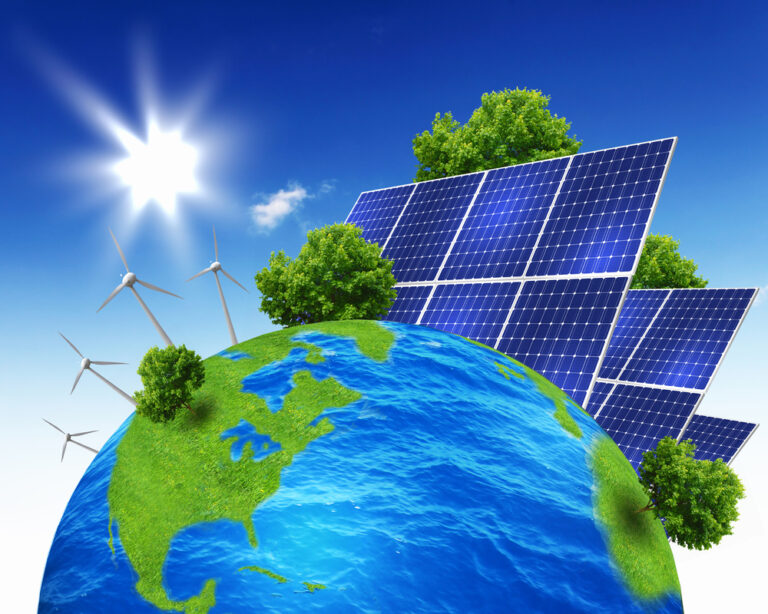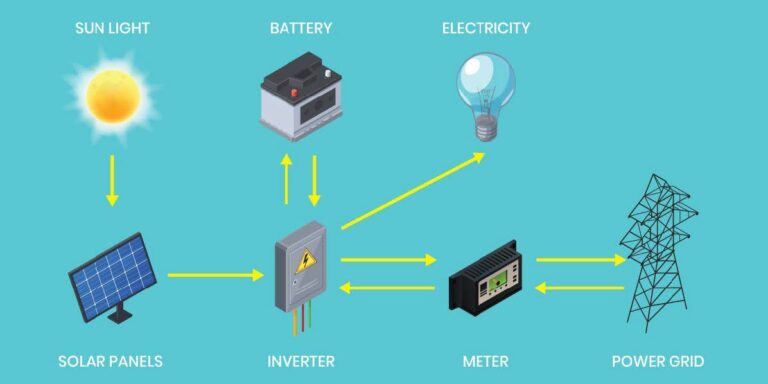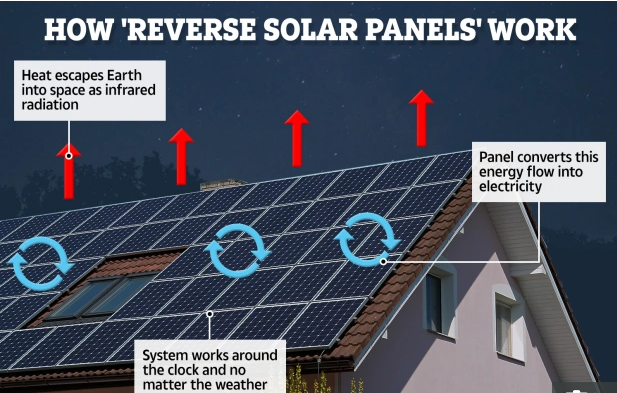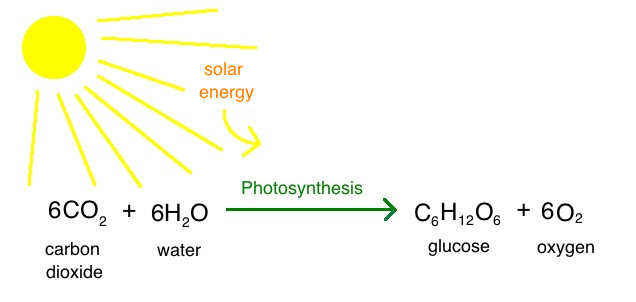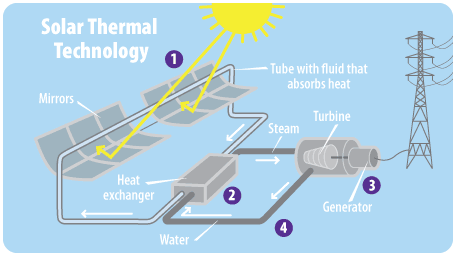What Is Passive Solar Energy?
What is passive solar energy? Let’s dive right in and explore this fascinating concept. Imagine harnessing the power of the sun to naturally heat your home, without the need for complex machinery or expensive equipment. That’s exactly what passive solar energy is all about.
When we talk about passive solar energy, we’re referring to the design and orientation of buildings to maximize the benefits of the sun’s heat and light. By strategically placing windows, using materials that absorb and retain heat, and incorporating natural ventilation, passive solar buildings can stay warm in winter and cool in summer.
Passive solar energy is an eco-friendly, cost-effective solution that utilizes a free and sustainable energy source – the sun. So, let’s delve deeper into the world of passive solar energy and discover how it can revolutionize the way we design and power our homes.
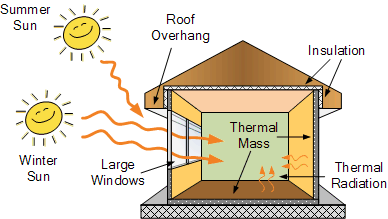
What is Passive Solar Energy?
Passive solar energy refers to a method of harnessing the sun’s energy without the need for mechanical or electrical devices. It is an energy-efficient approach that relies on the strategic design and orientation of buildings and spaces to maximize natural sunlight and heat. By utilizing elements such as windows, thermal mass, and insulation, passive solar energy can provide heating, cooling, and lighting to a space. This article will delve into the various aspects of passive solar energy, including its benefits, design principles, and practical applications.
The Basics of Passive Solar Energy
Passive solar energy harnesses the power of the sun through design principles that capture and utilize natural resources to provide heating, cooling, and lighting. The main components of a passive solar system include sunlight, thermal mass, insulation, and ventilation.
The Importance of Sunlight
In passive solar design, sunlight is a crucial element that provides heat and light to a space. By carefully considering the placement and size of windows, architects and designers can optimize natural daylighting and reduce the need for artificial lighting during the day. Sunlight also serves as the primary heat source in passive solar heating systems, as it can directly heat thermal mass materials within a building.
Thermal mass refers to materials that can absorb, store, and release heat. Common examples of thermal mass include concrete, stone, and water. When sunlight enters a space through windows, it is absorbed by the thermal mass, which then radiates heat back into the room over time. This thermal storage effect helps regulate indoor temperatures, reducing the need for mechanical heating and cooling systems.
Insulation plays a vital role in passive solar design by minimizing heat loss or gain through the building envelope. By using materials with high insulating properties, such as fiberglass or foam, designers can create a thermal barrier that prevents heat transfer between the interior and exterior of a building. Proper insulation ensures optimal energy efficiency and reduces the reliance on mechanical heating and cooling systems.
Key Takeaways: What is Passive Solar Energy?
- Passive solar energy is a form of renewable energy that utilizes the sun’s energy to heat and cool a building without the need for mechanical systems.
- It involves designing a building to take advantage of natural elements such as sunlight, shade, and ventilation for optimal energy efficiency.
- Passive solar techniques include orienting the building to maximize sun exposure, incorporating thermal mass to store and release heat, and using proper insulation to minimize heat loss.
- Benefits of passive solar energy include reduced energy costs, improved indoor comfort, and reduced environmental impact.
- Passive solar design can be implemented in both residential and commercial buildings, making it accessible and applicable for various types of construction projects.
Frequently Asked Questions
Welcome to our Frequently Asked Questions section where we answer your queries about passive solar energy. Passive solar energy is a method of utilizing the sun’s energy to naturally heat and cool buildings without the need for mechanical systems. It involves utilizing the design and materials of a structure to capture, store, and distribute solar energy. Let’s explore some common questions on this topic.
1. How does passive solar energy work?
Passive solar energy systems work by leveraging the sun’s energy to heat and cool a building naturally. This is achieved through strategic design, orientation, and the use of solar-responsive materials. South-facing windows allow sunlight to enter during the winter, warming the interior through direct gain. Thermal mass materials, such as concrete or brick, absorb and store this heat, releasing it slowly when temperatures drop. In the summer, overhangs or shading devices protect the windows from direct sunlight, preventing excessive heat gain.
Additionally, natural ventilation techniques are employed to ensure adequate airflow and cooling during hot seasons. These include cross ventilation, stack ventilation, and the use of operable windows and vents to promote the movement of air. Through these passive strategies, buildings can maintain comfortable temperatures and reduce reliance on artificial heating and cooling systems.
2. What are the advantages of passive solar energy?
Passive solar energy offers several advantages. Firstly, it significantly reduces energy consumption and decreases reliance on fossil fuel-based heating and cooling systems. This leads to lower utility bills and contributes to a more sustainable and environmentally friendly lifestyle. Secondly, passive solar design increases thermal comfort by utilizing natural heat and distributing it evenly throughout the building. It also minimizes the need for additional heating and cooling equipment, which can be noisy and require maintenance.
Another advantage is improved indoor air quality. By utilizing natural ventilation techniques, passive solar energy systems can help circulate fresh air throughout the building, reducing the buildup of pollutants and allergens. Additionally, passive solar design often incorporates ample natural light, which enhances the overall well-being and productivity of occupants. Finally, passive solar buildings tend to have a longer lifespan and higher resale value due to their energy-efficient features.
3. Can passive solar energy be used in all climates?
While passive solar energy can be utilized in all climates, the specific design considerations may vary depending on the region. In colder climates, the focus is on maximizing heat gain and minimizing heat loss. This is typically achieved through optimizing insulation, using high-performance windows, and incorporating thermal mass materials to store and slowly release heat. Additionally, properly designed overhangs and shading devices prevent excessive heat loss during colder months.
In warmer climates, the emphasis is on minimizing heat gain and promoting natural cooling. This can be achieved through features like well-placed windows that allow for cross ventilation, shading elements to block direct sunlight, and reflective materials to reduce solar heat gain. Additionally, landscaping techniques like planting deciduous trees can provide shade during the summer while allowing sunlight to pass through during the winter.
4. Is passive solar energy cost-effective?
Yes, passive solar energy is considered a cost-effective solution in the long run. While the initial construction costs may be slightly higher due to specialized design features and materials, the energy savings over time make it a worthwhile investment. By reducing the need for mechanical heating and cooling systems, passive solar buildings can significantly lower utility bills. Additionally, as energy costs continue to rise, the economic benefits of passive solar energy become increasingly apparent.
Moreover, passive solar design can also result in reduced maintenance costs. With a focus on durable materials and natural ventilation, there are fewer mechanical systems to maintain, repair, or replace. This can lead to long-term savings as well as a reduced ecological footprint.
5. Are there any limitations to passive solar energy?
While passive solar energy offers numerous benefits, there are a few limitations to consider. Firstly, the effectiveness of passive solar design may be impacted by the orientation and location of the building. A structure in a shaded area or with limited access to sunlight may not be able to fully harness the benefits of passive solar energy. Additionally, passive solar design may not be suitable for retrofitting older buildings that lack the necessary features or are not properly oriented.
Furthermore, passive solar systems may require regular monitoring and adjustment to optimize their performance. This includes ensuring proper window operation, shading adjustments, and maintaining thermal mass materials. Finally, passive solar design is most effective when complemented by energy-efficient appliances and lighting systems, as they further reduce energy consumption and maximize the efficiency of the overall building design.
Summary
Passive solar energy is a smart and simple way to use the sun’s heat and light to our advantage. By designing and positioning buildings to maximize sunlight, we can save energy and reduce our carbon footprint. This can be done through features like large windows, thermal mass, and proper insulation.
Harnessing passive solar energy not only helps the environment, but also saves money on heating and cooling bills. It’s a win-win situation that anyone can benefit from. So, next time you see a house with big windows or dark-colored walls, just remember they’re using passive solar energy to stay comfortable and eco-friendly!

